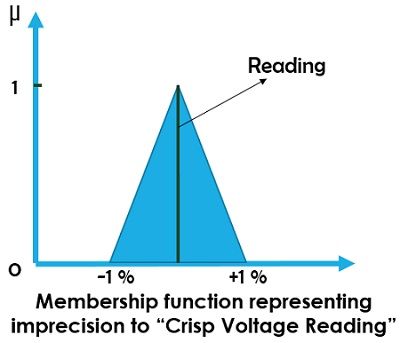 Fuzzification and defuzzification are the fuzzy inferencing system steps where the fuzzification translates the precise quantity as a fuzzy quantity whereas defuzzification converts the fuzzy quantity into a crisp one. The techniques are very useful in the fuzzy inference process, where the mapping is developed from a given input to an output with the help of fuzzy logic. This mapping provides the base for making the decision and discovering patterns.
Fuzzification and defuzzification are the fuzzy inferencing system steps where the fuzzification translates the precise quantity as a fuzzy quantity whereas defuzzification converts the fuzzy quantity into a crisp one. The techniques are very useful in the fuzzy inference process, where the mapping is developed from a given input to an output with the help of fuzzy logic. This mapping provides the base for making the decision and discovering patterns.
The fuzzy inference process is consist of the step – Fuzzification, Rule evaluation and Defuzzification among which we are going to understand the difference between fuzzification and defuzzification.
Content: Fuzzification and Defuzzification
Comparison Chart
| Basis for comparison | Fuzzification | Defuzzification |
|---|---|---|
| Basic | Precise data is converted into imprecise data. | Imprecise data is converted into precise data. |
| Methods | Intuition, inference, rank ordering, angular fuzzy sets, neural network, etcetera. | Maximum membership principle, centroid method, weighted average method, center of sums, etcetera. |
| Example | Voltmeter | Stepper motor and D/A converter |
| Complexity | Quite simple | Complicated |
Definition of Fuzzification
Fuzzification is the method of converting a crisp quantity into a fuzzy quantity. This is achieved by recognizing the various assumed crisp and deterministic quantities as completely nondeterministic and quite uncertain in nature. The uncertainty might have emerged due to vagueness and imprecision which lead the variables to be represented by a membership function as they could be fuzzy in nature. The process translates accurate crisp input values into linguistic variables represented by fuzzy sets. Then it applies membership functions to the measurements and determines the degree of membership.
Let’s understand this by a practical example of a voltmeter which produces a crisp data but these data can generate an experimental error. The below-given figure shows the associated member function for a probable range of errors for a typical voltage reading.
For example, when a news reporter says the temperature is 40° Celsius the viewer converts the crisp input value into a linguistic variable like favourable temperature for the human body, hot or cold and then decides what to wear. One the same hand, if someone is not able to fuzzify, then it is not possible to continue the decision process, or error decision may occur.
Definition of Defuzzification
Defuzzification is the inverse process of fuzzification where the mapping is done to convert the fuzzy results into crisp results. It maps from a space of fuzzy control actions defined over an output universe of discourse into a space of crisp (nonfuzzy) control actions. The necessity of the defuzzification was arisen due to crisp control actions in some practical implementation are needed to operate the control.
The process is able to generate a nonfuzzy control action that illustrates the possibility distribution of an inferred fuzzy control action. Defuzzification process can be considered as the rounding off process, where fuzzy set with a group of membership values on the unit interval may be decreased to a single scalar quantity. The reason behind this are the situations that occur when the outcome of the fuzzy process requires to be a single scalar quantity as restrained to a fuzzy set.
Key Differences Between Fuzzification and Defuzzification
- Fuzzification is the method of transforming crisp values into fuzzy values (imprecise). In contrast, defuzzification is just opposite to fuzzification where the fuzzy values are converted into precise or crisp data.
- Fuzzification is simpler than defuzzification, comparatively.
Conclusion
The fuzzification and defuzzification are the inverse processes of the fuzzy inference system where in fuzzification could use IF-THEN rules for fuzzifying the crisp value. On the contrary, defuzzification uses the center of gravity methods to find the centroid of the sets.
Leave a Reply